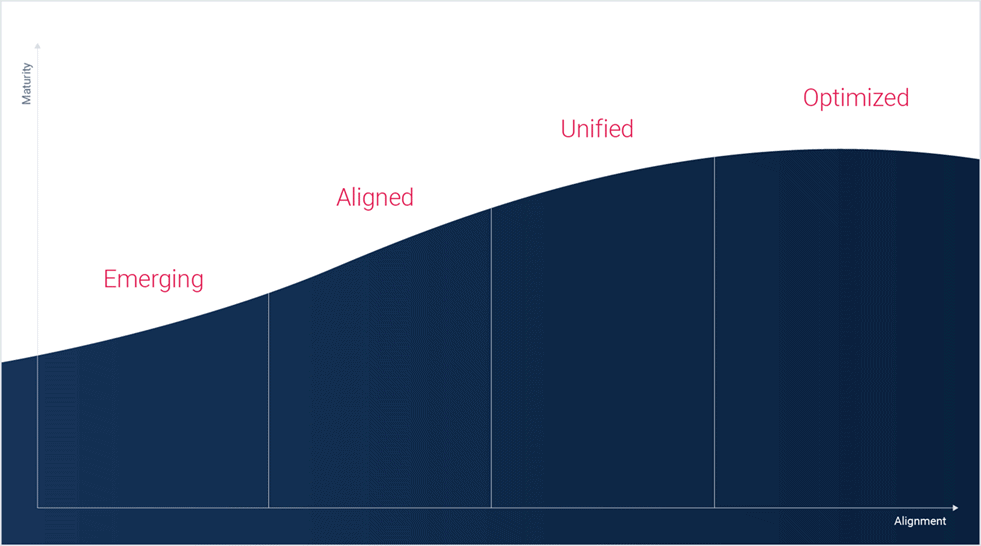Marketing
What is Marketing Maturity and Why is it so Important Right Now?
by clickdimensions

What is marketing maturity? In its simplest definition, it is the move from a seller-centric to a buyer-centric approach to marketing. Those lower on the spectrum of maturity tend to be more project focused while those at the higher end of the maturity spectrum are drivers of strategic growth. These increasing levels of maturity correspond with increasing levels of digital marketing sophistication and expertise.
Let’s illustrate this concept by looking at a process that has been traditionally thought of as unpleasant and frustrating for customers but can now be stress-free and even enjoyable – buying a new car. As you can see in the graphic below, as the car buying experience moves from traditional marketing methods to digital ones, it becomes more controlled by the buyer and more personalized to them. Businesses that are more mature in their marketing give customers more of what they want, and in turn, they get more of what they want too.
Marketing maturity frameworks look at the processes, tactics, technology, data and outcomes of an organization to understand where they fall within that spectrum. It is through this understanding that marketers can identify gaps between where they are and where they want to be and seize on opportunities for improvement that will lead to greater marketing and, ultimately, revenue success.
For marketers today, the ability to grow in their marketing maturity is more critical than ever. With digital transformation evolving into the digital imperative, marketers face a sink-or-swim situation. Those that choose to ignore the importance of digital to their businesses and customers simply cannot contend with more digitally mature competitors. And this isn’t a challenge that is poised to disappear.
Since the onset of the pandemic, we have seen digital trends go from a snail’s pace to lightspeed – packing years of change into mere months. A multitude of surveys about post-pandemic life indicate that consumers are not planning to part with their newfound purchasing habits. As an example, two different Gartner studies provide a glimpse into the digital future:
- When it comes to shifting behavior from in-person to online, 43 percent of consumers say, “I plan on keeping the current way of doing things online even after the pandemic subsides.”
- By 2025, 80 percent of B2B sales interactions between suppliers and buyers will occur in digital channels.
For B2B and B2C marketers alike, this means that the push to offer a seamless digital customer is essential. And for many, that requires marketing maturity growth. Organizations can realize this growth by committing to understanding where they are currently within a marketing maturity framework and forming and aligning to a plan for how they will achieve higher levels.
You can take the first step in this process by discovering where your organization sits within the marketing maturity journey. Take our five-question assessment to find out now.








